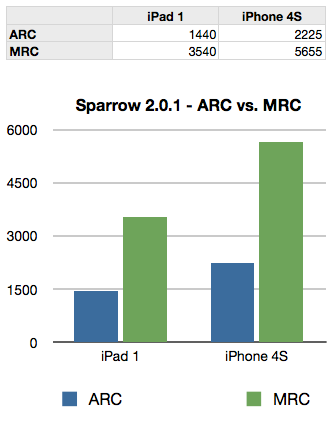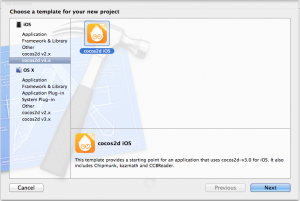Well, that’s that. Enjoy your holidays! 
I’ve also released OpenGW Preview 1 to KoboldTouch customers. Then visit the members area to download it. Visit the OpenGW website and wiki to learn more.
In case you feel like checking it out just sign up to any of the KoboldTouch subscription plans. The KoboldTouch subscription price will not change for you if you stay signed up. Once we release OpenGW (it will replace KoboldTouch) the price will go up for new customers.
The OpenGW framework itself is fully functional and well tested. It comes with a basic code-based example and a complex Platformer example game built with the help of Tiled and Lua.
What isn’t so good yet is the way projects are set up (expected to change before release) and to start a new project you’ll have to copy an existing project and start modifying that. OpenGW is not currently meant to be added to a custom project - unless you can fight your way through some project setup steps. These rough edges will be polished next year.
Daniel Sperl, developer of the Sparrow Framework, recently posted a performance comparison on the Apple Developer forum where Sparrow ran 2.5 times faster with MRC code than the version upgraded to ARC.
A curious finding though it seemed very far off from real world observations. Being a synthetic benchmark no less. I decided to do a similar test based on the same code comparing cocos2d v2 and v3.
Fortunately cocos2d-iphone v3 has made a similar switch from MRC (v2.1 and earlier) to ARC (v3 preview). Unfortunately the internals of cocos2d also changed to some extent, for example custom collection classes written in C were replaced by Core Foundation classes. I don’t have a full overview of the changes, but at least the renderer doesn’t seem to have changed in any significant way. Yet.
So while comparability is good, it’s not like Sparrow where truly the only changes made were converting the code from ARC back to MRC. Take the following benchmark results and comparisons with two grains of salt and pepper on the side.
ARC vs MRC
The original benchmark done with Sparrow has seen MRC perform 2.5 times better than ARC in a synthetic “draw as many sprites as possible until framerate has dropped consistently below 30 fps” test:
A preview version of cocos2d-iphone v3 has been available for a couple days now. I thought I’ll take a closer look and summarize what’s been done, what’s working and what isn’t, what’s new and what’s old but revamped.
Installation
 The installer script has been revamped. It has a different name (install.sh) and different parameters (-force instead of -f).
The installer script has been revamped. It has a different name (install.sh) and different parameters (-force instead of -f).
The first thing I noticed is that the installer is downloading Chipmunk2D. Made me wonder why, so I double-checked to confirm: Chipmunk isn’t included in the archive. This means no offline installation.
I’ll explain later why Chipmunk isn’t included.
Project & File Templates
In the preview there’s only one project template. It doesn’t demo any physics features, it’s your typical “Hello World” example with buttons.
There seems to be an issue with the template where any attempt to save it to a custom location caused Xcode to crash. In fact every time the “Save File” sheet came up and I didn’t click on “Create” right away, Xcode would crash. That’s just one of the reasons why it’s still a preview.
The CCNode File Template isn’t worth mentioning at this point, it creates an empty Objective-C class and is barely different from the regular Objective-C class template at this time.
Hello World v3
Continue reading »
Topics: Overall interest in cocos2d is waning. Unity and libgdx fighting for 1st place. Sprite Kit skyrocketing from day one.
This sums it up. Now for the details. Since my last game engine popularity measurement I tried to improve and streamline the process.
Game Engine Popularity on Stackoverflow.com
For stackoverflow.com data I’m searching for tagged questions created in a specific month. The search query looks like this:
[cocos2d-x] is:question created:2013-11
I repeated this for every tag for every month as far back as there were questions with the given tag. Continue reading »
This is my coming out: I’m not a test-driven developer. I have stopped trying to force it onto myself.
Yet I do test.
TDD never seemed to work very well for me personally. As a consequence the process never took hold in my habits of writing code, it did not prove itself as the uber-strategy to advancing to the next engineering level.
It took me a while to free myself of thinking that by not following TDD, that I am somehow an undergraduate software engineer. Or worse. As is sometimes implied by more religiously test-driven developers.
Eventually I realized that test-driven development is a thing that you’re born to love, or you aren’t. A process that works better or worse depending on personal habits, circumstances and environment - in that sense I now regard test-driven development along other relatively subjective and debated processes, like pair programming (XP).
Moreover, like pair programming, the minimum requirement is two programmers. If there are only two programmers in your team, it’s a freakin’ waste of time to do pair-programming round the clock. In the same light my experience with TDD is specifically in environments where I was/am the sole programmer, perhaps only occasionally sharing code development with one or two other developers at most.
This is where TDD’s proposed benefits lose a lot of their weight, while its drawbacks are more pronounced, and a more “agile” process works just as well for sole developers and tiny teams.
TDD is a personal preference
Unit testing is a tool used in test-driven development. If you don’t “test first” and then write the class’ code and then refactor, you aren’t doing test-driven development, you are testing. On the other hand, you can do just that without following the formal TDD process.
In test-driven development, the tests are written first. They are made to fail because the class they test hasn’t been written yet, it’s only a stub. Therefore all tests initially fail. Then you write code. Then you test and verify. Then you refactor. Then you test and verify again.
TDD is a fairly rigorous, rinse and repeat kind of process. It formalizes the process of writing code. It sometimes feels great, other times it feels terribly constrictive. Unfortunately TDD is not someting that you can do on and off, and still expect it to be very effective. Which means you have to be a rigorously test-driven developer. That might also explain why some developers are quite religious about TDD.
I wager that TDD is significantly harder to subscribe to for certain developer archetypes than others. It makes little sense to force it on developers. A lot of the process has to do with personal preference and a certain enlightened feeling that comes when applying and succeeding with it. Likewise, others may still be in shock after weeks and may forever struggle to adapt.
What is often forgotten when adapting TDD is to actually measure key metrics for the team and individual programmer, both before and after - for some teams/individuals the benefits may be tremendous, for others it may reveal fewer defects but also slower development. Then what remains is a tradeoff: do you prefer fewer defects or faster development? This is a valid question in any product development.
It should also be considered that it takes significantly greater effort for an experienced software engineer to change his or her personal process of developing code than it is for a student. Talk about teaching old dogs new tricks. The students are also more likely to find great rewards in test-driven development as TDD encourages them to learn and experience many software engineering principles.
Undeniably, test-driven development has benefits even for experienced developers. But since I’m talking about TDD specifically for sole developers and fairly small projects, then TDD is simply much less effective in my experience. A more informal process works just as well.
TDD benefits are generally overrated
There are benefits and drawbacks to TDD. Most remain inconclusive and subjective, only few have been measured in some very narrow-focused case studies (here and here). Continue reading »
Don’t multiply velocity/position changes with delta time! End of story.
Okay, not quite. There’s a rationale that goes with it. And there are situations where applying delta time is important, if not required - but probably not in the way you’ve been taught by tutorials and fellow developers.
This is important stuff because applying delta time wrongly makes for a bad game experience.
What is this delta time thing anyway?
If you integrate velocity to a node’s position every frame, you have the option to multiply that velocity with the delta time passed in the update: method. Delta time is simply the time difference between the previous and the current frame.
Actually that is not entirely accurate - delta time is the time difference between the last and current execution of the update: method. This usually occurs every frame, but doesn’t have to be. On a scheduled selector that runs every second, the delta time is - tadaa - one second.
Okay, not even that is accurate. On a scheduled selector that runs every second, delta time is at least one second. It could be slightly more. This can depend on the resolution of the timer and how well one second divides with the time allocated to render a frame, or (as you’ll see later) whether time delta was calculated with the same means as the screen refresh rate.
What does multiplying with delta time do?
The effect of (not) multiplying a node’s velocity with delta time is as follows, assuming that 60 fps is the maximum achievable framerate as on iOS:
- Don’t multiply with time delta: the node slows down as the framerate drops below 60 fps.
- Multiply with time delta: the node moves the same distance regardless of the framerate.
Multiplying with delta time is often referred to as “framerate independent” (updates, movement, gameplay, etc). In contrast not multiplying with time delta is often called “framerate dependent” (updates, movement, gameplay, etc).
Unfortunately, framerate independent updates are said to be “important” and often taught by fellow game developers without actually teaching the implications, drawbacks and situations where you don’t want to apply delta time. Here’s one key point to take away early:
Applying delta time only makes a difference when the framerate drops below 60 fps.
If your game always runs at 60 fps there’s absolutely no point to multiply with time delta. If time delta is only used to combat the effect of short-lasting framerate drops, possibly introduced by system events, you’re doing it wrong.
In this case, and most others too, you’re almost always better off not applying delta time on iOS. And if you do, there’s a whole set of things to consider, including the architecture of both the game and the engine.
Continue reading »
How to write code that is relevant for both Cocos2D and Sprite Kit, and as an extension to that the Kobold (2D/Touch/Kit) projects?
Because for the past months I shifted my attention to Sprite Kit, in order to create Kobold Kit and an accompanying Starterkit. While it’s obvious that Sprite Kit has everyone’s attention, I don’t want to turn my back on cocos2d-iphone and KoboldTouch. So from that came the need to create as much code as possible in a portable way.
The result is OpenGW, the world’s first game world simulation engine available to the public (in Nov/Dec). This is the holy grail I’ve been unknowingly searching for the past couple years!
What is OpenGW?
OpenGW stands for Open Game World.
It is a data-driven, engine-agnostic, cross-platform game world simulation engine.
I’ve set up a stub page where you’ll find more info on OpenGW.













